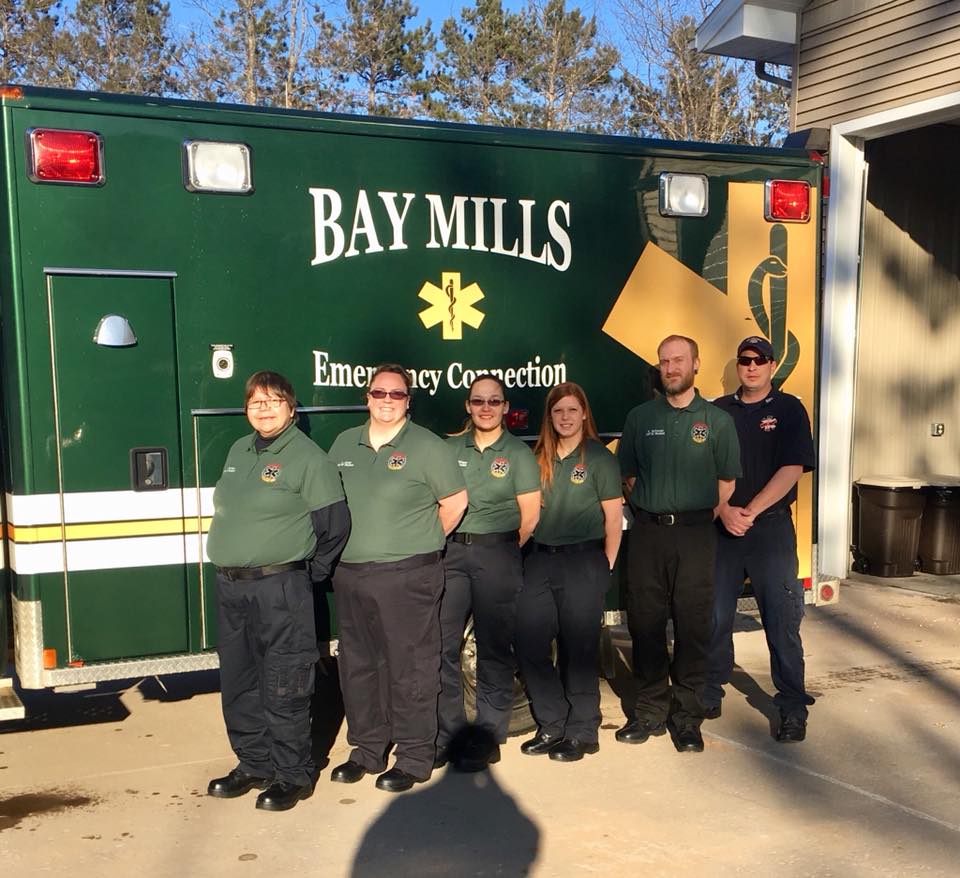Quick Links
- Home
-
About BMCC
-
Admissions
-
Financial Aid
- Net Price Calculator
- Scholarships & Grants
- Apply for FAFSA
- Financial Aid Refunds and Disbursement Schedule
- Return of Financial Aid or Title IV Funds
- Student Employment
- Forms & Links
- Understanding Tuition
- Student Billing
- Financial Aid Staff
- Higher Education Emergency Relief Fund (HEERF)
- Emergency Aid Program
-
Financial Aid
- Academics
-
Student Services
-
Contact Us

Address:
12214 W. Lakeshore Dr
Brimley, MI 49715
(906) 248-3354
Get Directions
Welcome new students, faculty, and staff! If you're having trouble accessing your BMCC email, Moodle, Student Records, etc. you can submit a ticket at support.bmcc.edu. Please be sure to include a currently active external email address of yours (or phone number where you can be reached), like Gmail, Yahoo, Hotmail, and so on. After submitting a ticket using the form, if you're not seeing a reply in your inbox, be sure to check your spam or junk folder for a reply. You can call IT to check on your ticket status by calling (906) 248-3354, toll free: (866) 967-2622 (BMCC) and ask for the Information Technology or IT department.
Paramedic
The Bay Mills Community College Paramedic program has been issued a Letter of Review by the Committee on Accreditation of Educational Programs for the Emergency Medical Services Professions (CoAEMSP). This letter is NOT a CAAHEP accreditation status, it is a status signifying that a program seeking initial accreditation has demonstrated sufficient compliance with the accreditation standards through the Letter of Review Self Study Report (LSSR) and other documentation. Letter of Review is recognized by the National Registry of Emergency Medical Technicians (NREMT) for eligibility to take the National Registry's Paramedic credentialing examination(s). However, it is NOT a guarantee of eventual accreditation.
To contact CoAEMSP:
214-703-8445
The cohort will be friendly to the individuals that currently work during the day and will offer many positives for having you education through BMCC. There is greater than 30 years of field experience from the instructors, have greater than 10 year experience in initial education and boast a 92% pass rate at the EMT and AEMT level. Past students that have obtained their Michigan License were hired almost immediately in the workforce and most past students to date are working in the health care field in some capacity.
Paramedic Degree Audit Form (Coming Soon)
Curriculum Map (Coming Soon)
Bay Mills Community College has received Michigan Department of Health and Human Services funding through the State of Michigan EMS Workforce Program to provide students with training. Students enrolling in the fall 2023 cohort are eligible to receive funding support for tuition and textbooks, uniform apparel (polo shirts, pants, sweatshirts, caps, high visibility jackets, and barrier extrication gloves). Students enrolling in this timeframe will also be eligible for individual supplies like trauma shears, digital stethoscope, medic BLS kit, micro stream flashlight, and field guides. To aid in transportation to classes, students may receive up to $50 in gas cards per week.
Description of the Profession (as per EMS Agenda for Future, NHTSA)
The Emergency Medical Services Professions include four levels: Paramedic, Advanced EMT, EMT, and Emergency Medical Responder. CAAHEP accredits educational programs at the Paramedic and Advanced EMT levels. Programs at the EMT and Emergency Medical Responder levels may be included as exit points in CAAHEP-accredited Paramedic and Advanced EMT programs. “Stand-alone” EMT and Emergency Medical Responder programs may be reviewed by the Committee on Accreditation of Educational Programs for the Emergency Medical Services Professions (CoAEMSP).
The Paramedic is an allied health professional whose primary focus is to provide advanced emergency medical care for critical and emergent patients who access the emergency medical system. This individual possesses the complex knowledge and skills necessary to provide patient care and transportation. Paramedics function as part of a comprehensive EMS response, under medical oversight. Paramedics perform interventions with the basic and advanced equipment typically found on an ambulance. The Paramedic is a link from the scene into the health care system.
Goal of the Provider - Paramedic:
“To prepare competent entry-level Paramedics in the cognitive (knowledge), psychomotor (skills), and affective (behavior) learning domains with or without exit points at the Advanced Emergency Medical Technician and/or Emergency Medical Technician, and/or Emergency Medical Responder levels.”
The paramedic is a health professional whose primary focus is to respond to, assess, and triage emergent, urgent, and non-urgent requests for medical care, apply basic and advanced knowledge and skills necessary to determine patient physiologic, psychological, and psychosocial needs, administer medications, interpret and use diagnostic findings to implement treatment, provide complex patient care, and facilitate referrals and/or access to a higher level of care when the needs of the patient exceed the capability level of the paramedic. A paramedic often serves as a patient care team member in a hospital or other health care setting to the full extent of the paramedic’s education, certification, licensure, and credentialing. Paramedics may work in community settings where they take on additional responsibilities monitoring and evaluating the needs of at-risk patients, as well as intervening to mitigate conditions that could lead to poor outcomes. Paramedics help educate patients and the public in the prevention and/or management of medical, health, psychological, and safety issues.
Paramedics:
- Function as part of a comprehensive EMS response, community, health, or public safety system with advanced clinical protocols and medical oversight.
- Perform interventions with the basic and advanced equipment typically found on an ambulance, including diagnostic equipment approved by an agency medical director.
- May provide specialized interfacility care during transport.
- Are an important link in the continuum of health care.
Other Attributes
Paramedics commonly facilitate medical decisions at emergency scenes and during transport. Paramedics work in a variety of specialty care settings including ground and air ambulances, and in occupational, hospital, and community settings. Academic preparation enables paramedics to use a wide range of pharmacology, airway, and monitoring devices as well as use critical thinking skills to make complex judgments such as the need for transport from a field site, alternate destination decisions, the level of personnel appropriate for transporting a patient, and similar judgments. Due to the complexity of the paramedic scope of practice and the required integration of knowledge and skills, many training programs are moving towards advanced training at the Associate degree or higher level.
Education Requirements
Successful completion of a nationally accredited paramedic program that meets all other State requirements.
Primary Role
Provide advanced care in a variety of settings; interpretive and diagnostic capabilities; determine destination needs within the health care system; specialty transport.
Type of Education
Academic setting:
• Diploma, certificate, associate or bachelors/baccalaureate degree awarded for successful completion.
Critical Thinking
Within a set of protocol-driven, clearly defined principles that:
- Engages in complex risk versus benefit analysis of Participants in making decisions about patient care, transport destinations, the need for additional patient care resources, and similar judgments.
| Completion Year | Number of Students Paramedic Program |
Number of Students Eligible for NREMT Paramedic Exam |
Number of NREMT Pass Rates-Written within 3 Attempts |
Number of NREMT Pass Rates-Written within 6 Attempts |
Paramedic Program Retention Rate |
Paramedic Program Positive Placement |
|---|---|---|---|---|---|---|
| 2025 | Coming Soon! | Coming Soon! | Coming Soon! | Coming Soon! | Coming Soon! | Coming Soon! |
“Employment of emergency medical technicians (EMTs) and paramedics is projected to grow 15 percent from 2016 to 2026, much faster than the average for all occupations. Emergencies, such as car crashes, natural disasters, and acts of violence, will continue to require the skills of EMTs and paramedics.” (US Bureau of Labor Statistics, 2018)

Here are some local starting wages for the Eastern Upper Peninsula:
- EMT starting wage $18-19/hr
- Specialists starting wage $19-20/hr
- Paramedic starting wage $24-28/hr
According to the US Bureau of Labor and Statistics, May 2017 National Occupational Employment and Wages Estimates, the following are the national median salaries.
| Emergency Medical Technicians & Paramedics | $33,380 |
To learn more about the Emergency Medical Technician or Paramedic Programs, contact Randy Miller, EMS Department Chair at:
Email: [email protected]



